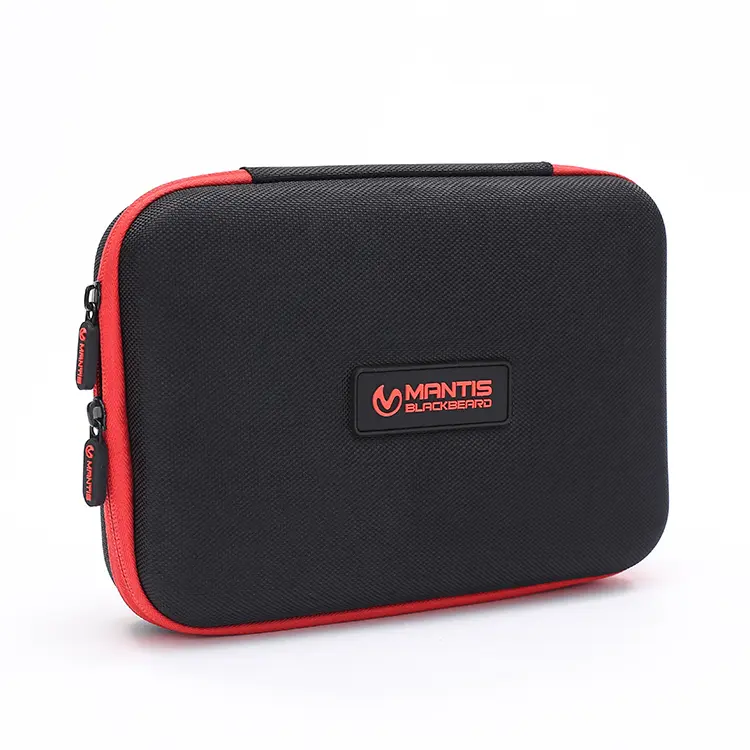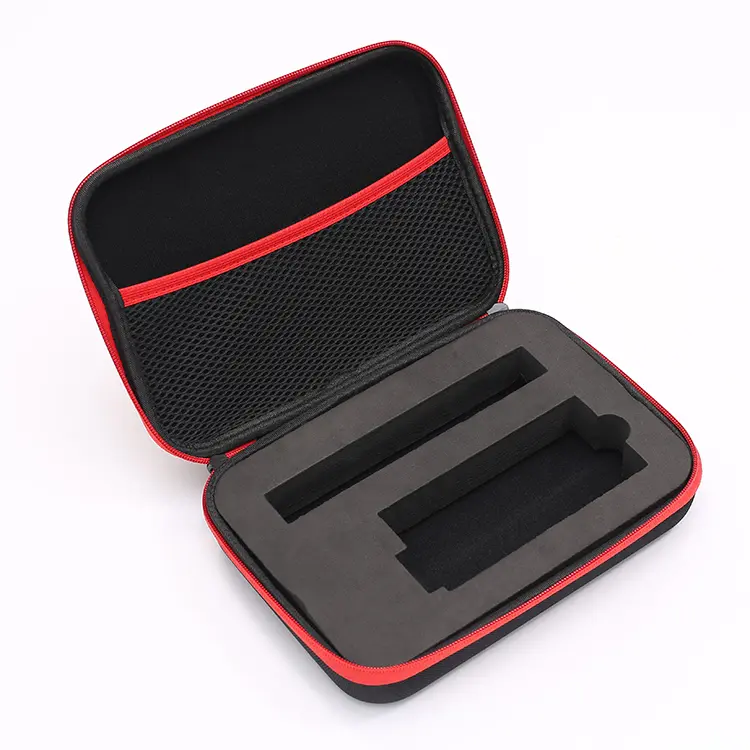Surface treatment of EVA tool bags
In today’s global market, EVA tool bags are widely favored by international wholesale buyers because of their lightness, durability, and waterproofness. The surface treatment process of EVA tool bags is an important part of improving their quality and function.
1. Characteristics and application of EVA materials
EVA (ethylene-vinyl acetate copolymer) is a polymer material with good softness, elasticity and chemical stability. These characteristics make EVA materials widely used in the field of tool bags. EVA tool bags can not only effectively protect tools from collision and extrusion, but also have the advantages of waterproof, moisture-proof and corrosion-resistant, which are very suitable for use in various harsh environments.
2. The importance of surface treatment
Surface treatment is not only a need for aesthetics for EVA tool bags, but also a key step to improve their functionality and durability. Through surface treatment, the wear resistance, waterproofness, anti-slip properties of the tool bag can be increased. At the same time, brand logos and decorative patterns can be added through printing, coating and other methods to enhance the added value of the product.
3. Common surface treatment methods
(I) Coating treatment
Coating treatment is a commonly used method in the surface treatment of EVA tool bags. By applying a special coating on the surface of the EVA material, the waterproofness and wear resistance of the tool kit can be significantly improved. For example, PU coating is a common choice, which can form a tough protective film to effectively prevent moisture penetration and surface wear. In addition, there are some coatings with special functions, such as UV protection coating, antibacterial coating, etc., which can be selected according to different usage requirements.
(II) Printing technology
Printing technology also plays an important role in the production of EVA tool kits. Common printing methods include screen printing, thermal transfer and digital printing. Screen printing is suitable for large-area pattern printing, with bright colors and clear patterns. It is suitable for brand logos and large-area decorative patterns. Thermal transfer technology can achieve complex patterns and multi-color printing, which is particularly suitable for personalized customization. Digital printing is fast and flexible, suitable for small batch and multi-variety production.
(III) Hot stamping and embossing
Hot stamping and embossing processes can add unique texture and visual effects to EVA tool kits. Hot stamping uses high temperature to stamp gold or other colored foil on the EVA surface to form shiny patterns or text, which is often used for brand logos and decorative lines. Embossing is to apply pressure on the surface of EVA material to form various textures and patterns, such as leather texture, wood grain, etc., to make the tool kit more three-dimensional and textured.
(IV) Composite treatment
Compound treatment is to compound EVA material with other materials to enhance the performance of the tool kit. For example, compounding EVA with non-woven fabrics, nylon fabrics and other materials can improve the wear resistance and tear resistance of the tool kit. Composite treatment can also achieve multiple functions such as waterproof, fireproof and antibacterial through different material combinations.
4. Process flow of surface treatment
(I) Pretreatment
Before surface treatment, EVA material usually needs to be pretreated. The purpose of pretreatment is to clean the surface of the material, remove impurities such as dust and oil, and ensure the adhesion of coating or printing. Common pretreatment methods include physical cleaning (such as wiping and blowing) and chemical cleaning (such as using detergents).
(II) Coating or printing
After pretreatment, coating or printing can be performed. According to the selected process and materials, the paint or ink is evenly applied to the EVA surface. During the coating or printing process, the thickness and uniformity of the coating need to be strictly controlled to ensure the quality of the final product.
(III) Curing
After the coating or printing is completed, curing treatment is required. The curing process can be achieved by natural drying, heating drying or UV curing. The cured coating or printing layer will be closely combined with the EVA material to form a solid protective layer.
(IV) Quality inspection
Finally, the surface-treated EVA tool kit is strictly quality inspected. The inspection content includes performance indicators such as adhesion, wear resistance, and waterproofness of the coating, as well as the clarity and color accuracy of the printed pattern. Only products that pass the quality inspection can enter the market for sale.
5. Precautions for surface treatment
(I) Selecting the right material
When performing surface treatment, it is crucial to select the right material. Different coatings, inks, and composite materials have different performance and application ranges, and need to be selected according to the use requirements and environmental conditions of the tool kit. For example, if the tool kit is mainly used outdoors, it is necessary to select materials with waterproof and UV protection functions.
(II) Control process parameters
The parameter control of the surface treatment process has a direct impact on the quality of the final product. During the coating and printing process, the coating thickness, uniformity, curing temperature and time and other parameters need to be strictly controlled. If the parameters are not properly controlled, it may lead to problems such as poor coating adhesion and blurred printed patterns.
(III) Environmental protection and safety
With the increase of environmental awareness, the materials and processes used in the surface treatment process also need to meet environmental protection requirements. Some traditional coatings and inks may contain harmful substances, which are harmful to the environment and human health. Therefore, when selecting materials and processes, environmentally friendly materials should be given priority.
Post time: Jul-21-2025






